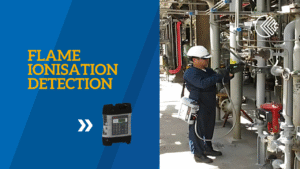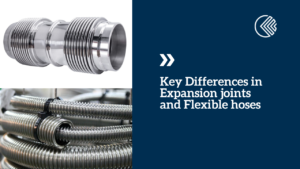
- KLINGER Australia
- Blogs
- Insights on Onsite Shutdown and Turnaround Assignments in the pulp and Paper Industry: Insights from John Meago

Producing one of the most important inventions in human history, the paper manufacturing industry has evolved profoundly over the past few decades, driven by increased automation, stricter environmental regulations, and a focus on sustainability.
Our Sales Manager John Meago, recently completed an onsite shutdown and turnaround assignment for a major client in the paper industry. Over the course of two weeks, he stayed at a remote site with the customer, focusing on the hands-on manufacturing of gaskets and aiming to deliver products with quick turnaround times.
We interviewed him to learn more about his decision to take on this hands-on role and to gain a deeper understanding of the industry.

Fact box:
- Client Industry: Pulp and Paper
- Assignment Duration: Two weeks
- Equipment Used Onsite: Mark III gasket ring cutter, small gasket hand cutter, punch sets, and other necessary hand tools.
- Gaskets KLINGER Can Manufacture Onsite: All types of soft cut gasket in any size, including ring and Full Face gaskets with segmented dovetail joins. Occasionally, the material needs to be adjusted to accommodate the size of the gasket.
- Gaskets KLINGER Stocks Onsite: Standard-sized spiral wound gaskets (SWGs) and a range of Sealex products.
Q: Are there any specific sealing challenges in the pulp and paper industry that stand out?
The pulp and paper industry uses diverse range of materials and flange types in their production. They use both standard and custom flanges tailored to specific machinery and process requirements, which makes choosing the right gaskets quite complex. Additionally, many pulp and paper mills are located in remote sites, and the remoteness makes shutdowns and maintenance turnarounds more challenging to manage. This means pulp and paper mills must collaborate with suppliers who can provide a wide variety of sealing products and have the capacity, both in terms of product stock and expertise to maintain operations and minimise downtime.
Q:Given that KLINGER has manufacturing bases in Australia with a large volume of products in stock, why is it necessary to work onsite?
Remote sites make it difficult for customers to interact directly with people and assets, leading to delays in technical advice and gasket delivery. Downtime is costly, so being onsite is the quickest and most cost-effective way to provide the necessary products.

John and his container on-site office
For instance, I can review and make a simple gasket and hand it to an operator in a matter of minutes. In contrast, a package would take at least a day to prepare, pack, dispatch and arrive, not to mention the additional transition costs. Some of the required gaskets are custom-sized, and I can often produce these quicker with small hand-cutting tools compared to standard machines.
Our mobile service unit will be on-site to support all your gasket needs during a turnaround. This includes manufacturing gaskets as needed, offering advice, and providing an immediate point of contact for any gasket-related issues.
Q: How do you ensure quality control while you work on-site?
Quality control is straightforward when I personally make the products onsite with the client. I perform visual and dimensional checks to ensure accuracy, then hand over the finished product directly to the site. Feedback on its appearance and assembly is received quickly, allowing for immediate adjustments if necessary. I am completely hands-on and take full responsibility for the quality of the products.
Q: That's very impressive. It sounds like this level of expertise is only achievable with decades of experience in gasket problem-solving and applications.
Absolutely. While cutting tools and skills can be learned, it's the problem-solving that truly makes the difference. Being an engineer has equipped me with valuable problem-solving approaches and critical materials knowledge. Additionally, I have over twenty years of experience with both our products and those of our competitors. Over the years, I've handled numerous shutdown services for various customers including this recent one.
Q: To better understand how working onsite with the customer can be highly efficient and effective, can you provide a real-life case?
Of course, here are a case where I was personally onsite:
Rapid Full Face Gasket Production
Challenge: A client faced a critical situation where installers and a crane were standing by, unable to proceed without a large, custom-sized Full Face gasket. The available drawings required extensive time to hand-draw the gasket, especially challenging due to the many holes in the Full Face flange.
Solution: The client contacted our mobile shutdown and turnaround service. Instead of relying on time-consuming drawings, we requested the top cover be provided directly to our service team. The top cover was placed directly on the required gasket sheet material, allowing for precise tracing and quick hand-cutting.
Outcome: This approach resulted in the shortest possible turnaround time for producing a custom Full Face gasket that did not already exist as a precut. The installers and crane were able to resume work swiftly.
Q: Awesome, sounds like a great win. Besides the onsite assignment, is there any other recent case you would like to talk about that you are particularly proud of?
Urgent Spiral Wound Gasket Replacement
Challenge: In another instance, a client urgently needed a type R spiral wound gasket for a piece of equipment that was not a pipe flange. The type R gasket had a history of poor performance, leading to frequent failures.
Solution: After providing technical input, it was determined that a T109 gasket would be a far superior choice for this application. Our team arranged for the urgent manufacture and shipment of the T109 gasket from our Perth factory.
Outcome: The T109 gasket delivered the best performance ever achieved for this joint, becoming the preferred option for the client. The switch to the T109 gasket eliminated costs associated with previous gasket failures, leading to improved reliability and reduced maintenance expenses.
Q: Thank you John. The cases you shared perfectly demonstrate your expertise and what we can achieve as a team. Is there anything else you'd like to share about your experience working onsite?
When I'm onsite, the job receives my full attention. I respond to emails and calls during breaks or after leaving the worksite. As you can imagine, balancing this with my role as a sales manager can be challenging. However, we are fortunate to have large customer service and technical teams in WA and QLD. Our teamwork is excellent, and they handle calls and take care of my customers while I'm temporarily focused on the onsite work in front of me.


